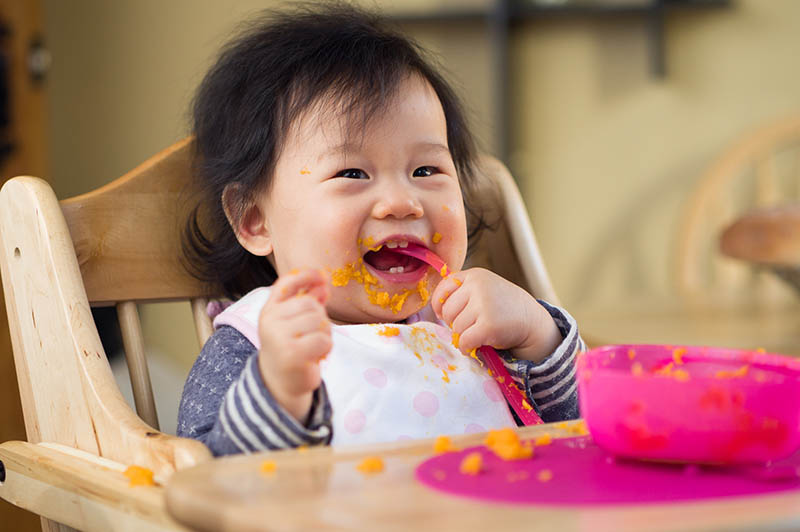Families For Life | Messy Eating

Messy eating is normal when children are learning to feed themselves. It’s natural for them to start by using their hands and fingers and then move on to cutlery, cups and plates. Over time, their muscles and coordination improve, and mealtimes become less messy.
Why children are messy eaters
Children go through developmental stages as they learn to feed themselves. First, they learn to eat solids and then take food from a spoon. They start feeding themselves with their hands and then move on to feeding themselves with spoons, forks and drinking from cups.
It takes a lot of time, practice and muscle coordination for children to learn to get food into their mouths without making a mess, so you can expect a few spills along the way!
Messy eating and playing with food
Children love to experiment and play with their food, even after they’ve developed the motor skills they need to eat without making a mess.
In fact, playing with food is one of the ways children develop their fine motor skills. Playing with unfamiliar foods can help children become more open to tasting these new foods.
Exploring the shape, colour and texture of food also helps children learn about their world. For example, here are just some of the amazing things your child might learn by playing with food:
Dropping things makes them fall down.
Throwing things makes them fly through the air.
Squishing peas changes the way they look and feel.
Sticking a sandwich in a drink makes Mum upset!
If you can understand why your child is playing with food and have a laugh about it, it might make accidents and messes easier to bear.
What you can do about messy eating
Most young children squish food in their hands, throw food and bowls onto the floor, deliberately dribble with their mouths full, or refuse to eat. Here are some ideas to help you cut down on mealtime mess – and make it less stressful.
Cut food into strips or fingers, and let your child use his hands rather than a spoon or fork. In the early days of learning to eat, your child will find this way of eating easier to manage.
Praise your child’s efforts when he eats something without creating a big mess. It’s best to tell your child exactly what he did well – for example, ‘Ashraf, I love the way you popped that banana straight into your mouth’.
If your child is old enough, you could try getting him involved in setting the table. If your child has helped to set up the meal, he might be less inclined to mess it up.
Sitting together and sharing mealtimes with your child lets you lead by example and shows your child how to eat and behave at the table. This can take time for your child to learn.
If you can stay calm and patient with your child’s mess, it’ll help you and your child to enjoy mealtimes more.
You’ll find messes easier to clean up if you put some plastic or newspaper around your child as he eats. You can also try using a feeding bib to keep clothes clean, and leaving bath time or a change of clothes for after meals.
© raisingchildren.net.au, translated and adapted with permission
Explore more